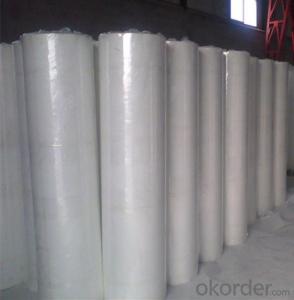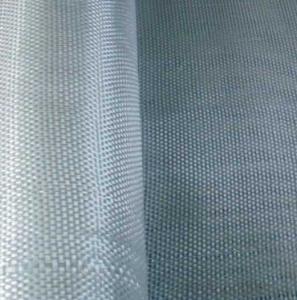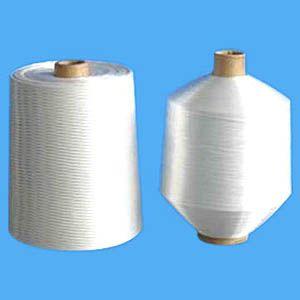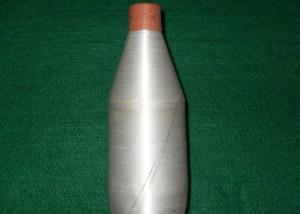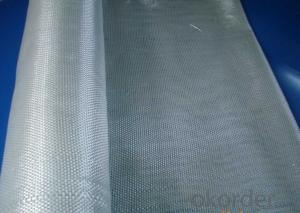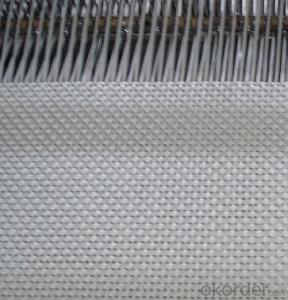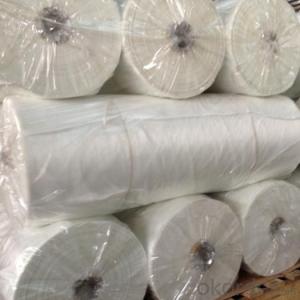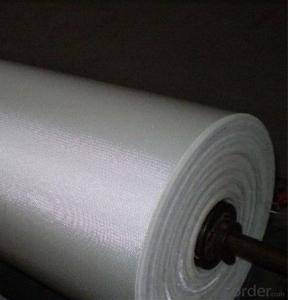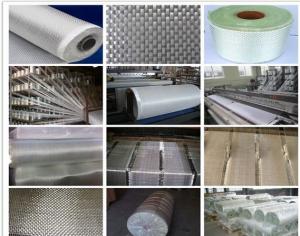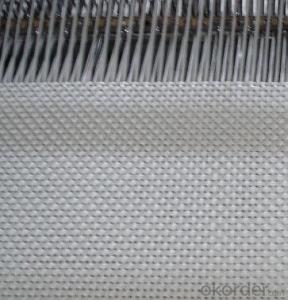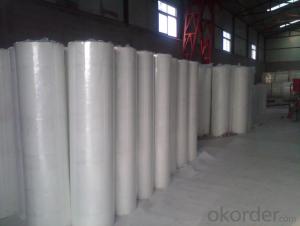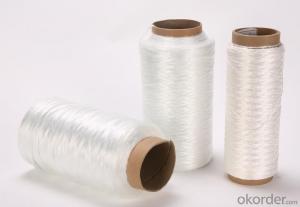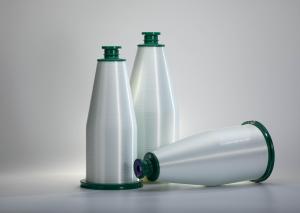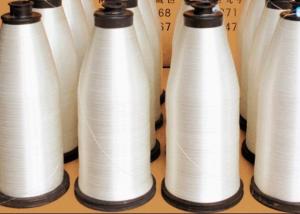Fiberglass Yarn Reinforced Corrosion Proofing Fiberglass Fabric
- Loading Port:
- Shanghai
- Payment Terms:
- TT OR LC
- Min Order Qty:
- 500 m²
- Supply Capability:
- 50000 m²/month
OKorder Service Pledge
OKorder Financial Service
You Might Also Like
Fiberglass Fabric for Corrosion Proofing Field
Fiberglass Fabric Introduction:
Fiberglass fabric is weaved by high quality fiberglass,as a kind of engineering material,which is
many excellent characteristics:
flame-resisting,corrosion resistant,high strength,heat resistance.stable structure,good chemical resistance,durability.
Fiberglass Fabric Features:
Warp and weft yarns are parallel arrangement as flat situation, with uniform tension;
Fiber is aligned with large consistency, stable and easy operation;
Good moldability, fast and complete wet out in resins, resulting in high productivity;
Good transparency and high strength of composite products.
Fiberglass Fabric Specification:
mark | Fiber consistency(ends/ cm) |
Area weight (g/ m2) |
Thick-ness (mm) |
Width (cm) |
Length (mm) | Breaking strength(N)≥ |
weave | |||
Warp direction | Weft direction | Warp direction | Weft direction | |||||||
EW200 | 16 | 12 | 200±20 | 0.2 | 90-130 | 300-1200 | 980 | 980 | ||
EW210 | 16 | 12 | 200±20 | 0.21 | 90-130 | 300-1200 | 1080 | 1080 | Twill weave | |
Plain weave | ||||||||||
EWR360 | 3.2 | 1.8 | 354±18 | 0.35 | 50-300 | 100 | 2000 | 2000 | ||
EW280 | 16 | 10 | 280±28 | 0.26 | 90-130 | 300-1200 | 1800 | 1800 | ||
EW300 | 14 | 10 | 320±32 | 0.3 | 90-130 | 300-1200 | 1500 | 1500 | ||
EW430 | 20 | 12 | 420±42 | 0.43 | 90-130 | 300-1200 | 2000 | 2000 | Broken twill | |
EWR136 | 10 | 10 | 136±13 | 0.136 | 100 | 200 | 850 | 850 |
Plain weave | |
EWR200 | 8 | 7 | 200±20 | 0.21 | 100 | 200 | 1200 | 1200 | ||
EWR400 | 3.6 | 3.2 | 400±30 | 0.4 | 100 | 50-100 | 2500 | 2500 | ||
EWR600 | 2.6 | 2.5 | 600±50 | 0.6 | 100 | 40KG | 4000 | 4000 | ||
EWR580 | 2.5 | 2.3 | 576±29 | 0.58 | 100 | 40KG | 3850 | 3850 | ||
EWR800 | 1.8 | 1.8 | 800±60 | 0.8 | 100 | 40KG | 4600 | 4600 | ||
Product Show
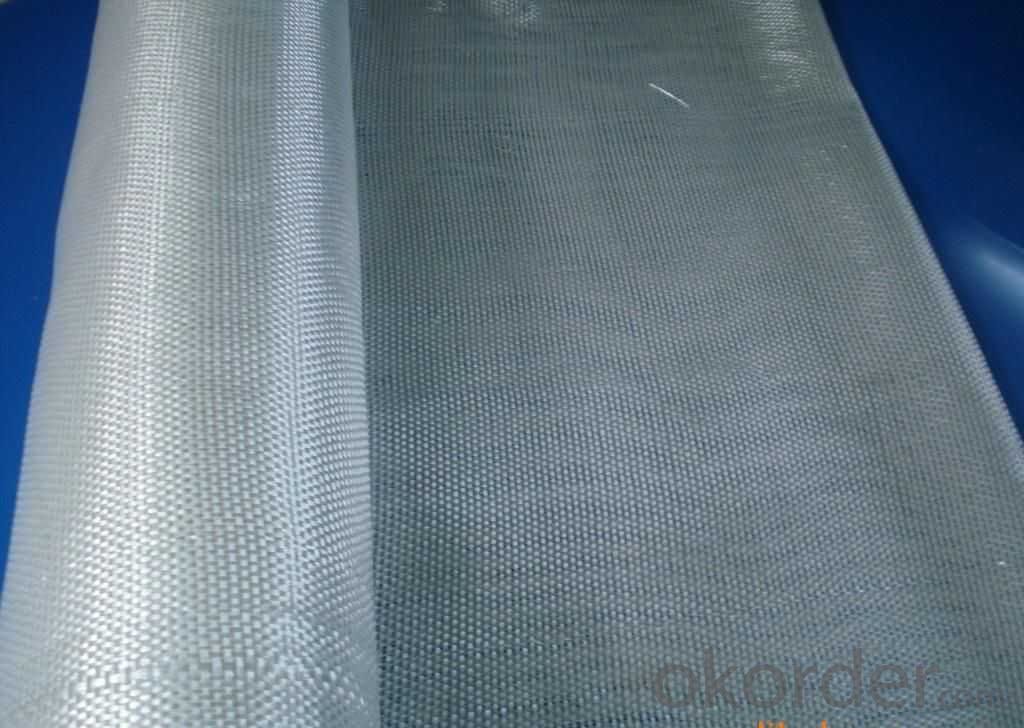
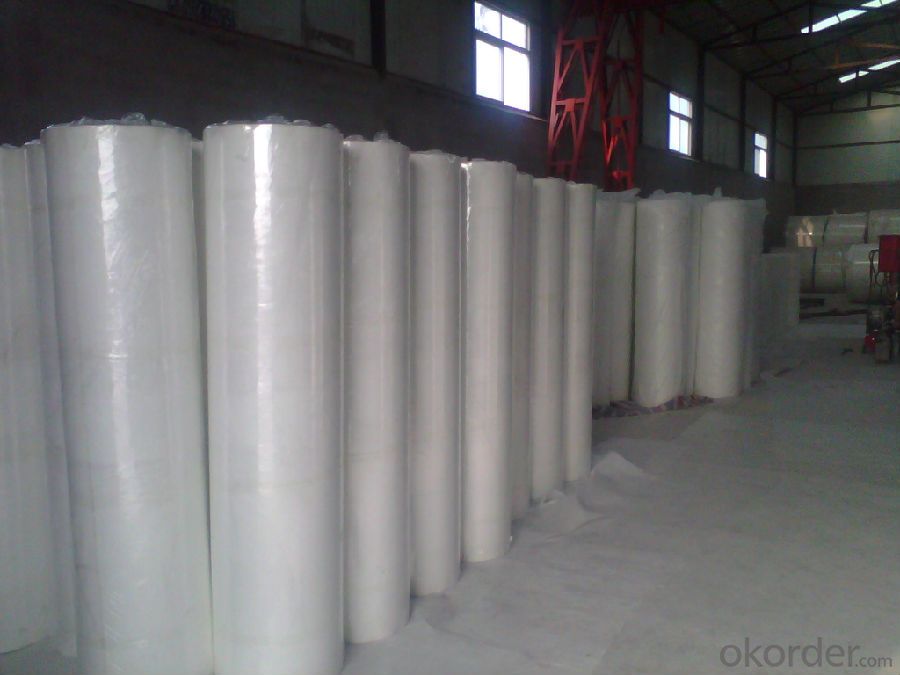
Fiberglass Fabric Usage:
E-glass woven roving is a schistose double faces reinforcement fabric that is weaved into from roving in directly.
E-glass fiber fabric (thin fabrics with thickness from 0.025 to 0.09mm) is suitable for electrical isolation mica product, wax cloth as the reinforcement materials.
E-glass woven roving applys to all kinds of polyester reinforcement system, (such as unsaturated polyester resin, vinylite,epoxy resin and phenolic resin.
E-glass woven roving is a high performance reinforcement material. It is widely used in hand lay-up and machinery processing products, (such as vessel, container, airplane and vehicle component, furniture, athletic facilities and other industry.
FAQ
1.Package of Fiberglass Fabric?
Fiberglass fabric is wound on a paper tube with inner diameters of 50. 8, 76 or 152mm. Each roll is wrapped in a plastic bag, then to be packed in a carton box. The rolls are to be horizontally placed.
Width (cm): 90, 100, 127
Length (m): 100, 200, 300, 400
2.Storage of Fiberglass Fabric?
Store rolls in a cool, dry location
Protect rolls from weather and other damage.
3.If sample available if needed?
We aim to offer our customer best Products&Service,samples are allowed if necessary.
- Q: Is fiberglass yarn resistant to mechanical damage?
- Yes, fiberglass yarn is generally resistant to mechanical damage. It has high tensile strength and excellent dimensional stability, making it highly durable and resistant to tearing or breaking under mechanical stress.
- Q: Is fiberglass yarn resistant to fungus?
- Yes, fiberglass yarn is generally resistant to fungus.
- Q: Can fiberglass yarn be used in the production of insulation batts?
- Yes, fiberglass yarn can be used in the production of insulation batts. Fiberglass yarn is made from thin strands of glass fibers that are spun together to create a continuous thread. This yarn is then used to manufacture various fiberglass products, including insulation batts. Fiberglass insulation batts are widely used in residential and commercial buildings to provide thermal and acoustic insulation. The fiberglass yarn is typically woven or layered together with other materials to create the batts, which are then installed in walls, ceilings, or floors to reduce heat transfer and improve energy efficiency. The properties of fiberglass yarn, such as its high strength, durability, and thermal resistance, make it an excellent choice for insulation batt production.
- Q: Is fiberglass yarn suitable for making automotive seat covers?
- Yes, fiberglass yarn is suitable for making automotive seat covers. Fiberglass is a strong and durable material that can withstand the wear and tear that automotive seat covers are subjected to. Additionally, fiberglass yarn is resistant to heat, chemicals, and UV rays, making it well-suited for use in vehicles. It also has excellent dimensional stability, meaning it retains its shape and resists stretching or shrinking over time. These qualities make fiberglass yarn a reliable choice for automotive seat covers, ensuring they can withstand the demands of daily use and offer long-lasting durability.
- Q: Can fiberglass yarn be used in the production of electrical tapes?
- Fiberglass yarn, with its high thermal resistance and electrical insulation properties, is a suitable material for the production of electrical tapes. By incorporating fiberglass yarn into the tape, it adds reinforcement, strength, and durability, making the tape resistant to high temperatures, electrical currents, and mechanical stress. Furthermore, the inclusion of fiberglass yarn improves the tape's dielectric properties, thereby enhancing its electrical insulation capabilities. As a result, fiberglass yarn is widely utilized in the manufacturing of electrical tapes.
- Q: Can fiberglass yarn be used for making tablecloths?
- Yes, fiberglass yarn can be used for making tablecloths.
- Q: Can fiberglass yarn be used in reinforcing concrete?
- Yes, fiberglass yarn can be used in reinforcing concrete. It is commonly used as a substitute or in addition to traditional steel reinforcement in concrete structures. Fiberglass yarn offers numerous advantages such as high tensile strength, corrosion resistance, and lightweight properties, making it an effective alternative for reinforcing concrete.
- Q: Can fiberglass yarn be used for making swimwear?
- Yes, fiberglass yarn can be used for making swimwear. It is often used in combination with other materials to create swimwear that is durable, lightweight, and has enhanced performance properties such as resistance to chlorine and UV rays.
- Q: Can fiberglass yarn be used for making carpets?
- Yes, fiberglass yarn can be used for making carpets.
- Q: Can fiberglass yarn be used in the production of industrial fabrics?
- Yes, fiberglass yarn can be used in the production of industrial fabrics. Fiberglass yarn is known for its high strength, durability, and heat resistance, making it suitable for various industrial applications such as insulation, reinforcement, and filtration. Its properties make it an ideal choice for manufacturing industrial fabrics that require high performance and reliability.
Send your message to us
Fiberglass Yarn Reinforced Corrosion Proofing Fiberglass Fabric
- Loading Port:
- Shanghai
- Payment Terms:
- TT OR LC
- Min Order Qty:
- 500 m²
- Supply Capability:
- 50000 m²/month
OKorder Service Pledge
OKorder Financial Service
Similar products
Hot products
Hot Searches
Related keywords
